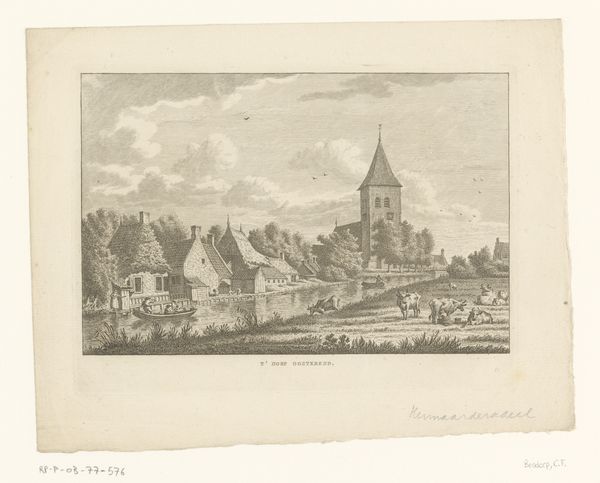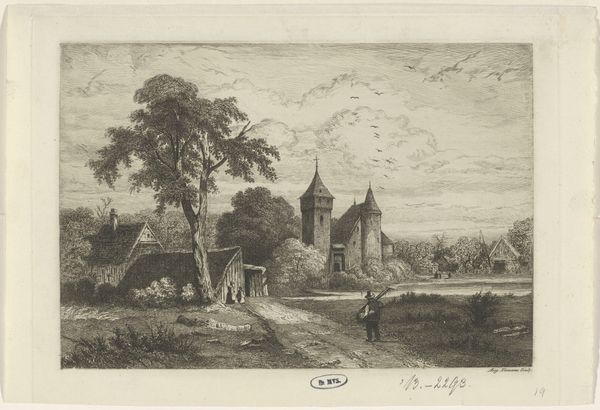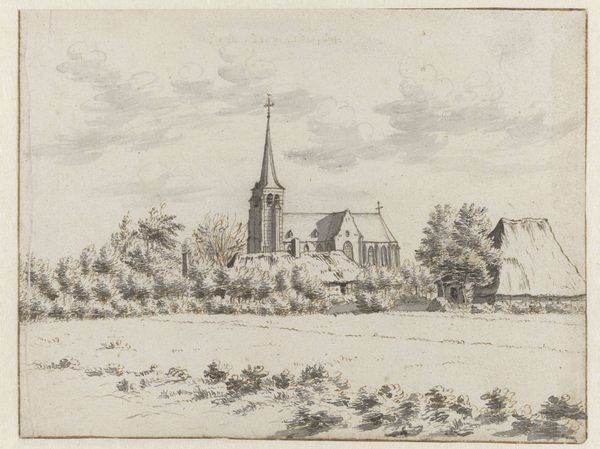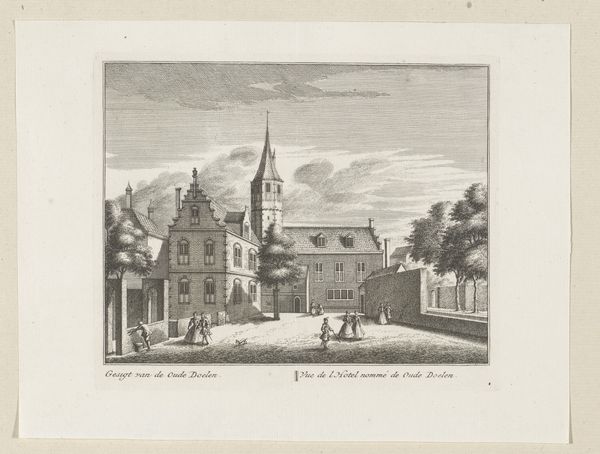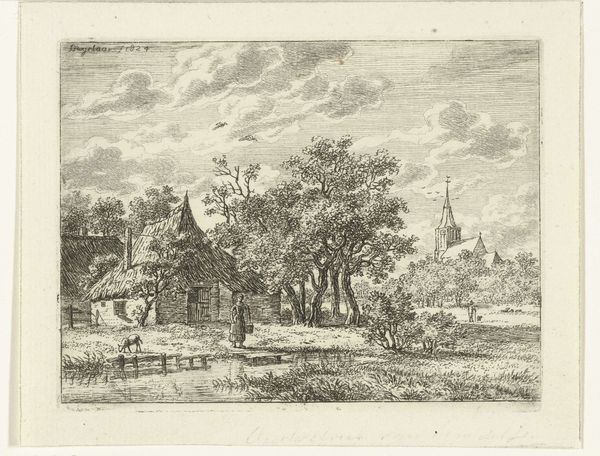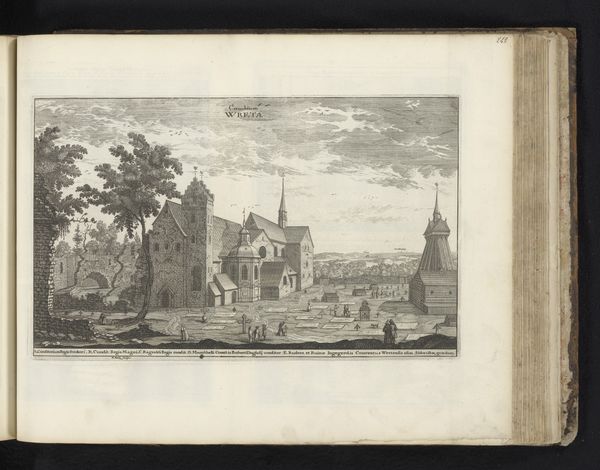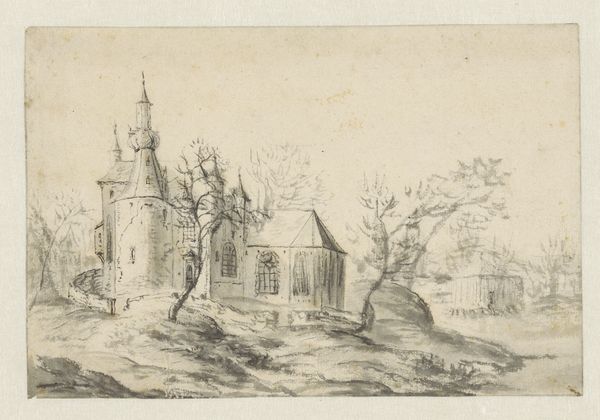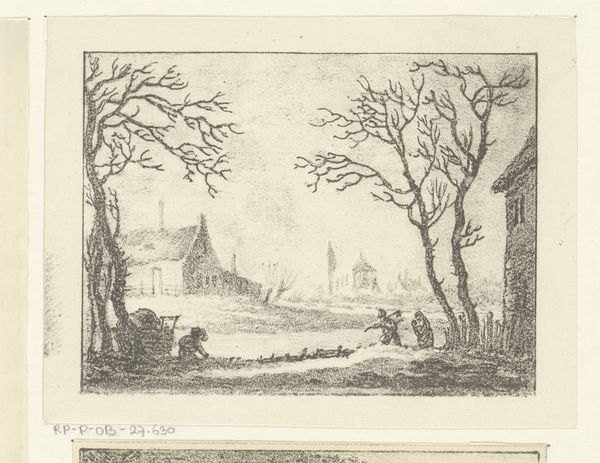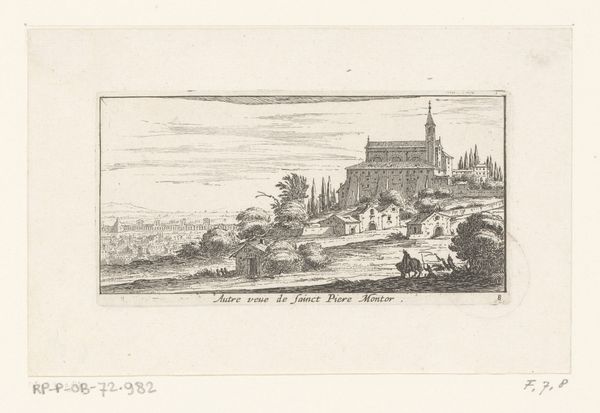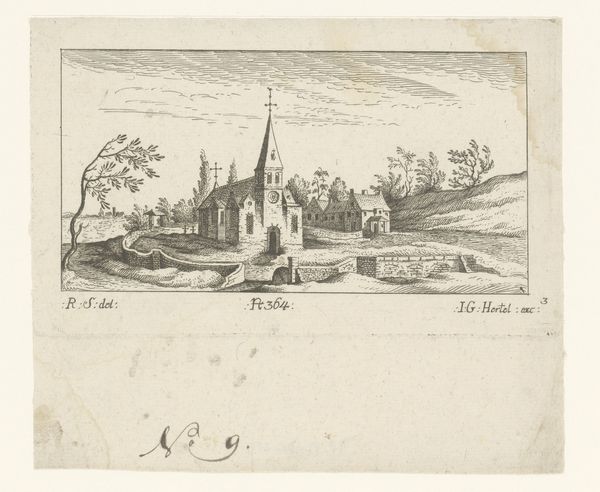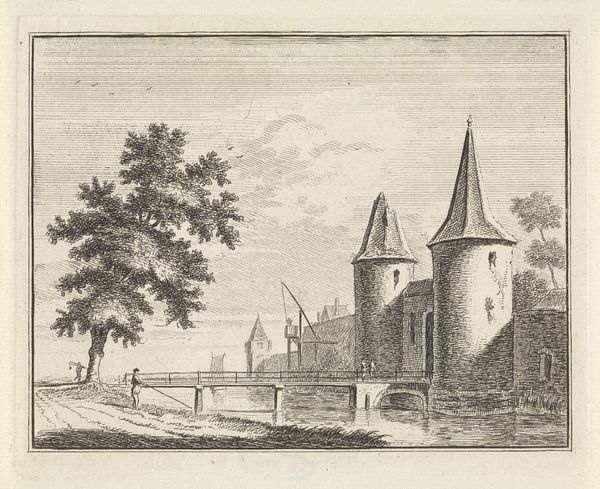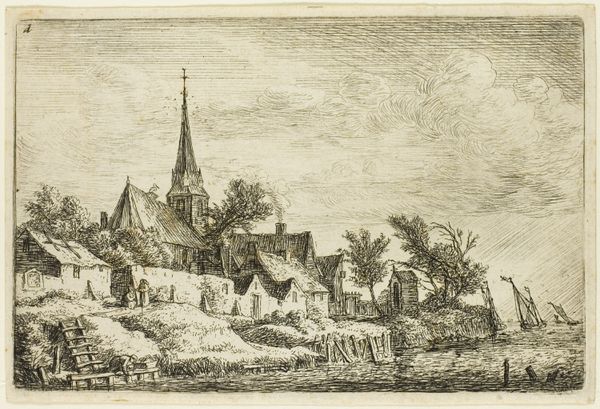
drawing, print, etching
#
drawing
#
baroque
# print
#
etching
#
landscape
#
cityscape
Dimensions: height 172 mm, width 255 mm
Copyright: Rijks Museum: Open Domain
Curator: I find myself drawn to the serene depiction of Dutch life in this etching. Paulus van Liender created this cityscape around 1760; it is entitled "Gezicht op het weeshuis en blekerij bij Amersfoort." Editor: The sky certainly dominates the composition. Despite being a print, there's a surprisingly luminous quality. It almost feels peaceful. A romantic snapshot, in a way. Curator: The orphanage itself stands somewhat removed from the foreground action. There is a city wall with figures that serve as witnesses overlooking it. Notice the contrast between the dark tower of the city wall and the sunlit bleaching fields. Van Liender is creating a visual and symbolic separation, isn’t he? Editor: Definitely. Those fields…that's where the linen was spread out to bleach in the sun, I presume? What’s interesting to me is that the tower, a symbol of power, is aging, cracked. While the orphanage is neat, pristine… and busy with labor. It's as if he is emphasizing where labor happens, at least. Curator: Indeed, these bleaching fields were central to the Dutch economy. It adds to my thought that Van Liender’s positioning invites us to reflect on societal order. Who is outside, who is inside. How wealth is created and how it interacts with public welfare institutions. I imagine these institutions were also sources of control and places of cultural conditioning. Editor: It makes one consider the relationship between those in power, the city's economy, and the care—and control—of the vulnerable. A visual representation of the era’s social structure, with all its intricacies. What resonates across time here? The way urban environments and societal functions always blend, and how they tell the silent story about care and economic practices? Curator: For me, I see a potent visual echo of societal priorities and control mechanisms, reminding us that these themes are as resonant today as they were in 1760. Editor: Agreed. It underscores how art can offer an unspoken commentary on how cities function as lived spaces.
Comments
No comments
Be the first to comment and join the conversation on the ultimate creative platform.
